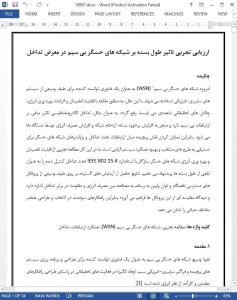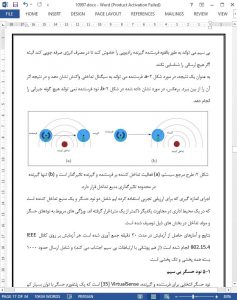Abstract
Wireless sensor networks are nowadays considered an enabling technology for a wide spectrum of cyber-physical systems applications. However, in order to cope with stringent dependability and energy efficiency requirements, several research challenges have to be solved. Electromagnetic interference, for instance, adversely affects wireless communication, resulting into increased packet collisions and network congestion, and also increasing the energy consumption of devices. Highlighting the complex interplay between communication under interference and parameters of sensor networks is therefore mandatory for driving design choices and improving system performance. In this work we propose an experimental study of the reliability and energy efficiency of IEEE 802.15.4 compliant sensor networks under controlled interference, as a function of the packets length. The results of an extensive set of experiments on an ample range of low-power asynchronous, medium access protocols point out the trade-off between energy consumption and robustness to interference and also provide a comparative view of the protocols, thus indicating useful guidelines in the choice and in the design of several critical components.
1. Introduction
The widespread diffusion of wireless sensor networks (WSN) as enabling technology for planning sophisticated, ubiquitous cyberphysical systems motivates research efforts towards the design of reliable and energy efficient solutions [1]. However this endeavor is hampered by several factors, such for instance operativeness in environments subject to interference. Indeed, transmissions over a wireless medium could interfere with simultaneous transmissions from other nodes of the network or with other radio frequency devices operating within the same frequency range, often resulting in the impossibility of correct decoding at the receiver. The former type of interference is classified as internal while the latter is usually referred to as external. Specifically, dense WSN deployments are particularly prone to internal interference, while external interference is basically due to partial or complete overlapping of radio communication with that of other devices operating within the 2.4 GHz ISM band (e.g. WiFi 802.11b/g/n or Bluetooth transceivers). Consumer electronics appliances (e.g. microwave ovens) could also generate interference within the 2.4 GHz ISM band because of electromagnetic compatibility issues [2].
7. Conclusions
Electromagnetic interference impairs communication and limits the lifetime of WSN. Indeed, to design reliable and flexible networked embedded system, detailed understanding of the role of parameters of the design space on performance, in environments subject to interference, is decisive. In this work we presented an experimental assessment aimed at evaluating the impact of payload size on the reliability of the communication and on the energy expenditure of a link composed by a pair of sensor nodes affected by controlled interference levels. We have conducted experiments to explore different scenarios (e.g. with various low-power MAC protocols and according to different communication patterns) by measuring the packet reception rate and the energy consumption of the system under study











